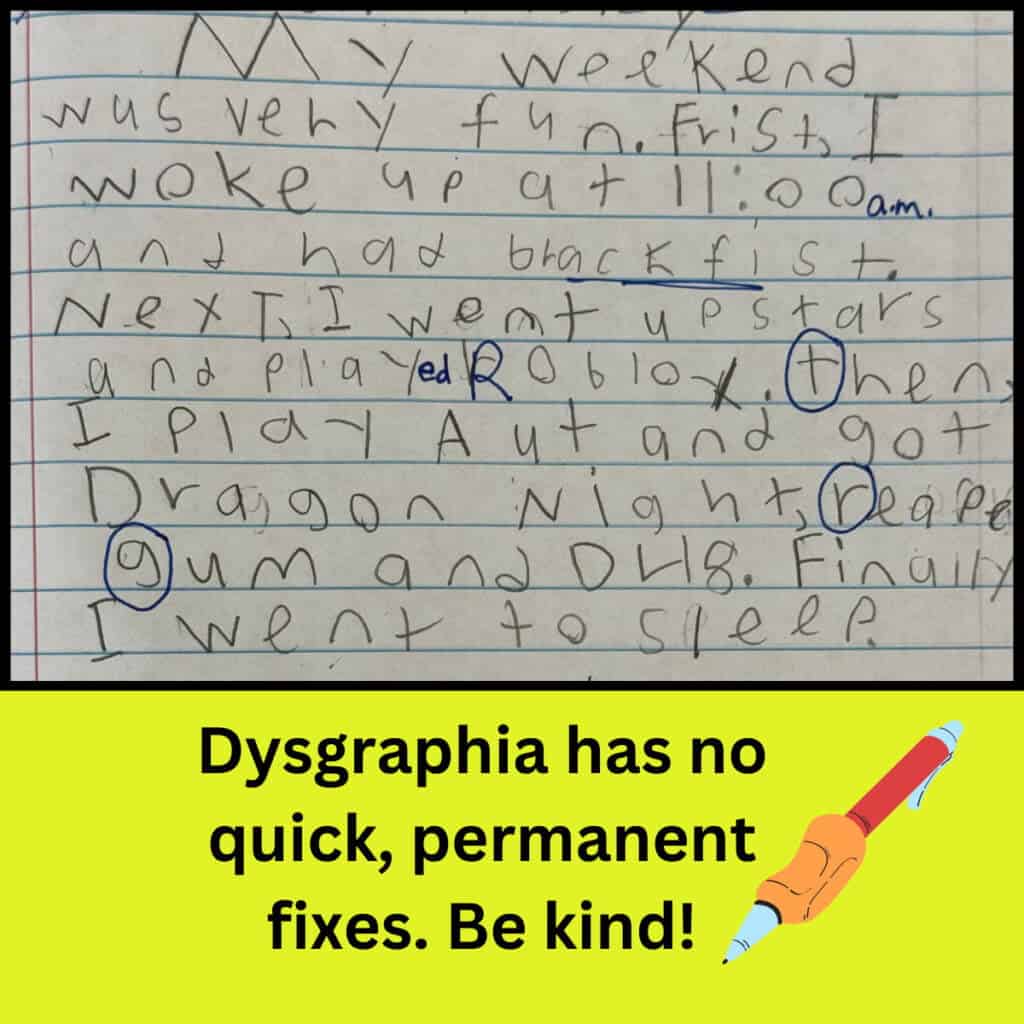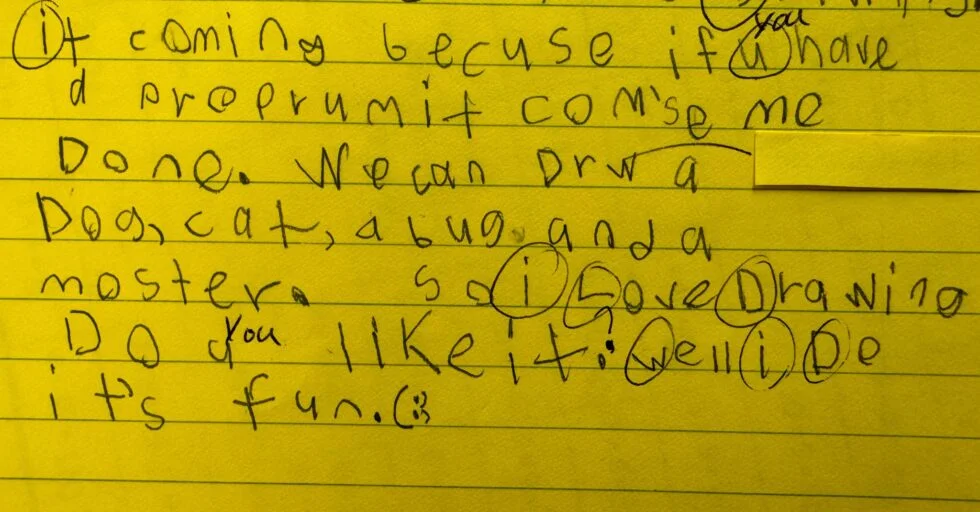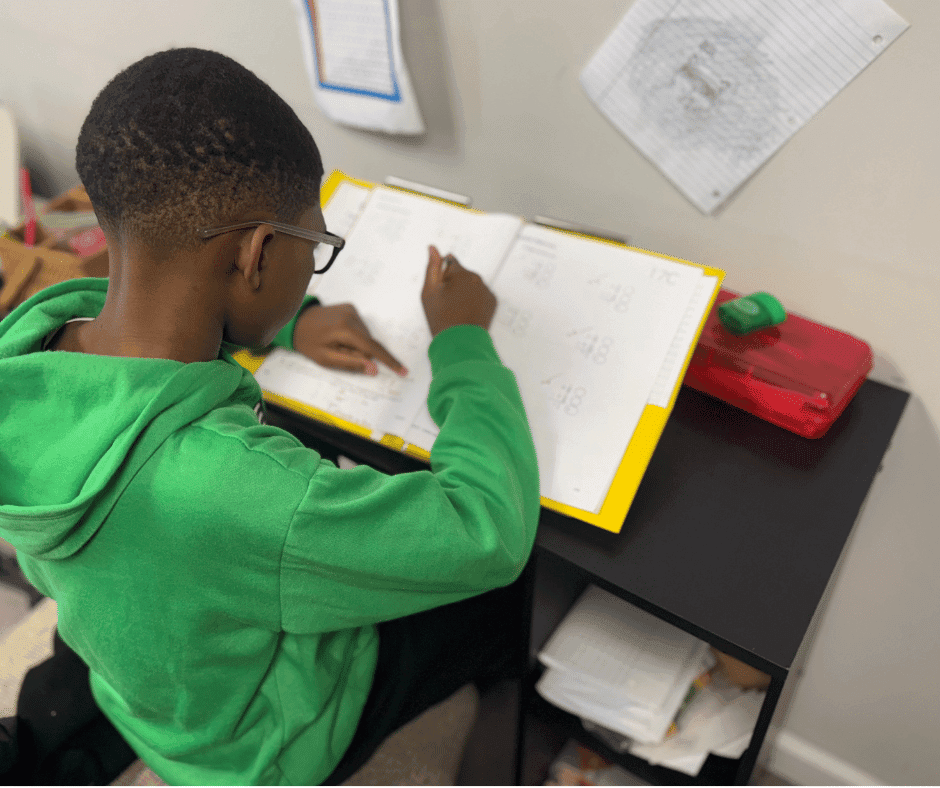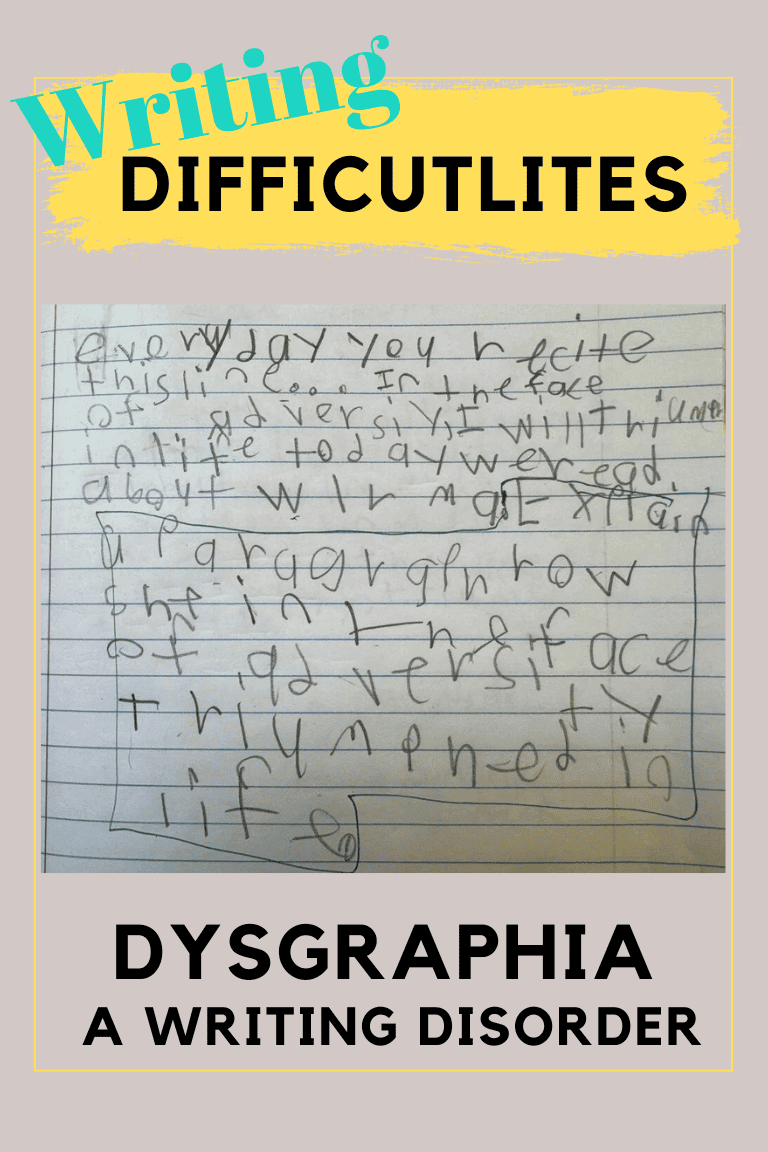Is your child or student having writing difficulties? Although poor handwriting isn’t a sure sign of dysgraphia, messy handwriting is a common sign of motor dysgraphia.
Parents and teachers should not only be aware, but be able to recognize dysgraphia in their students as early as possible.
Aside from poor penmanship, a child with writing difficulties might have a hard time translating their ideas onto paper, making writing difficult.
If not caught early, students may feel anxious about their academic and life challenges, experience self-esteem issues, and socially withdraw.
In this post, I’ll help you understand all there is to know about dysgraphia by explaining the following areas:
- What is Motor Dysgraphia?
- What Causes Motor Dysgraphia?
- Signs and Symptoms of Motor Dysgraphia
- Interventions and Support for Dysgraphia
What is Motor Dysgraphia?
Motor dysgraphia is the most common of the five types of dysgraphia. It’s a specific learning disability in the area of written expression that affects an individual’s ability to write.
Motor dysgraphia writing difficulties are related to the motor skills required for a child to write. Students impacted by this type of dysgraphia struggle with the physical act of writing.
The process of writing for these students is slow and laborious. It takes a lot of effort to produce writing, which still often results in illegible handwriting.
These students typically produce written work ranging from poor to illegible, impacting both spontaneous and copied tasks. Achieving “neat writing” is a challenge for them.
This form of dysgraphia is the result of a deficit in fine motor skills. Individuals may have poor dexterity, poor muscle tone, or just unspecified motor clumsiness.
Even so, it’s important to know and understand that motor dysgraphia does not reflect an individual’s cognitive level.

What Causes Motor Dysgraphia
We don’t know the exact cause of motor dysgraphia. However, it is believed to be related to differences in brain development, particularly in areas that control motor skills.
Other contributing factors:
The Factor of Neurological Differences
Changes in the cerebellum and motor cortex, parts of the brain responsible for motor control, can be a contributing factor affecting fine motor skills.
The Genetic Factor
Like dyslexia, there may be a genetic component that contributes to the cause of dysgraphia. It can run in families.
Do you or anyone in your student’s family have a form of dysgraphia?
Developmental Delays as Contrbuting Factors
Delays in the development of motor skills during early childhood can contribute to motor dysgraphia.
Factors Relating to Co-occurring Conditions
Motor dysgraphia often occurs alongside other learning disabilities or neurodevelopmental disorders, such as ADHD or autism spectrum disorder.
Signs and Symptoms of Motor Dysgraphia
Symptoms of motor dysgraphia can vary in severity but generally include:
Poor Handwriting: Kids may produce illegible handwriting, with inconsistent letter sizes, shapes, and spacing.
Slow Writing Speed: The process of writing may be slow and laborious, requiring significant effort and concentration.
Awkward Grasp: Children with dysgraphia may have an awkward or inconsistent pencil grip.
Fatigue: Writing can cause hand and arm fatigue, as individuals with motor dysgraphia often grip the pen or pencil too tightly and press hard on the paper.
Difficulty with Drawing and Fine Motor Tasks: In addition to handwriting, individuals may struggle with tasks that require fine motor control, such as drawing, cutting with scissors, or tying shoelaces.
This is very interesting, as one student that comes to mind now actually draws really well, yet he has trouble tying his shoes and doesn’t cut with scissors the best.
Avoidance of Writing Tasks: Due to the frustration and fatigue associated with writing, individuals with motor dysgraphia may avoid writing tasks or develop a dislike for writing.

Dysgraphia Interventions for Writing Difficulties
While some writing difficulties are lifelong, there are accommodations for dysgraphia, and several dysgraphia interventions exist to improve their writing skills and to cope.
Here are some interventions for dysgraphia:
Occupational Therapy: Occupational therapists can work with individuals to strengthen fine motor skills, improve hand-eye coordination, and develop better writing techniques.
Assistive Technology: As a teacher whose goal is to help my students become as independent as possible, I say take care in how you introduce assistive technology.

Assistive technology is wonderful and is greatly needed. However, you want to make sure the AT matches the child’s needs and doesn’t overcompensate.
For example, you can start improving motor dysgraphia by allowing students to use a slant board (pictured) and a pencil grip for writing assignments. The board helps with handwriting and pencil positioning, reducing strain.
Pencil grips help improve finger positioning and grip. Here are some examples of pencil grips (click) or if your student is younger, try these kids’ pencil holders.
You may also teach the student to write in cursive. When writing in cursive, there are fewer starting points. So a student has to pick up his or her pen/pencil less often.
This helps to improve writing speed, have more consistent letter sizing, and have neater overall writing for those with writing difficulties.
I like the Cursive Handwriting Workbook for adults and the Cursive Handwriting Workbook for kids.
The authors of those books recommend starting with gel pens or the softer B pencils.
If the student or adult has more severe writing difficulties, you may think about typing. In this case, a word processor may be in order. Why not a computer, you may ask? It would do the trick.
Depending on the age of the student, sometimes having a computer or pad may be asking a lot of a little one not to use anything else other than typing applications.
It can become yet another of many distractions that already exist for the student. For that reason, I like the portable word processor by Alpha, which is called Freewrite.
Whether you use a word processor or a computer, the individual will need to know how to type. I like the free program by TypingClub.
Last but not least, speech-to-text software. Google Docs has a built-in program, as does the Office Suite Word program.
That speech-to-text would be my last result other than maybe teaching students how to use it as a strategy for spelling words that they can’t spell.
Educational Accommodations: Schools can provide accommodations, such as extended time for writing tasks, the use of a scribe, or reduced emphasis on handwriting in assignments.
Practice and Patience: Regular practice with a focus on improving fine motor control and handwriting can lead to gradual improvements. Patience from educators, parents, and the individual is crucial.
Writing Difficulties May Be Lifelong, But It Can Improve
Handwriting problems often caused by motor dysgraphia usually create writing difficulties for students. However, with the right support and interventions, individuals can develop strategies to manage their difficulties with writing.
Understanding that motor dysgraphia is a neurological condition, not a reflection of intelligence or effort, is key to providing the appropriate support.
With the right tools and accommodations, individuals with motor dysgraphia can achieve their full potential in academic and professional settings.
You may also enjoy reading: Help for Students Who Have Phonological Dysgraphia

0 Comments